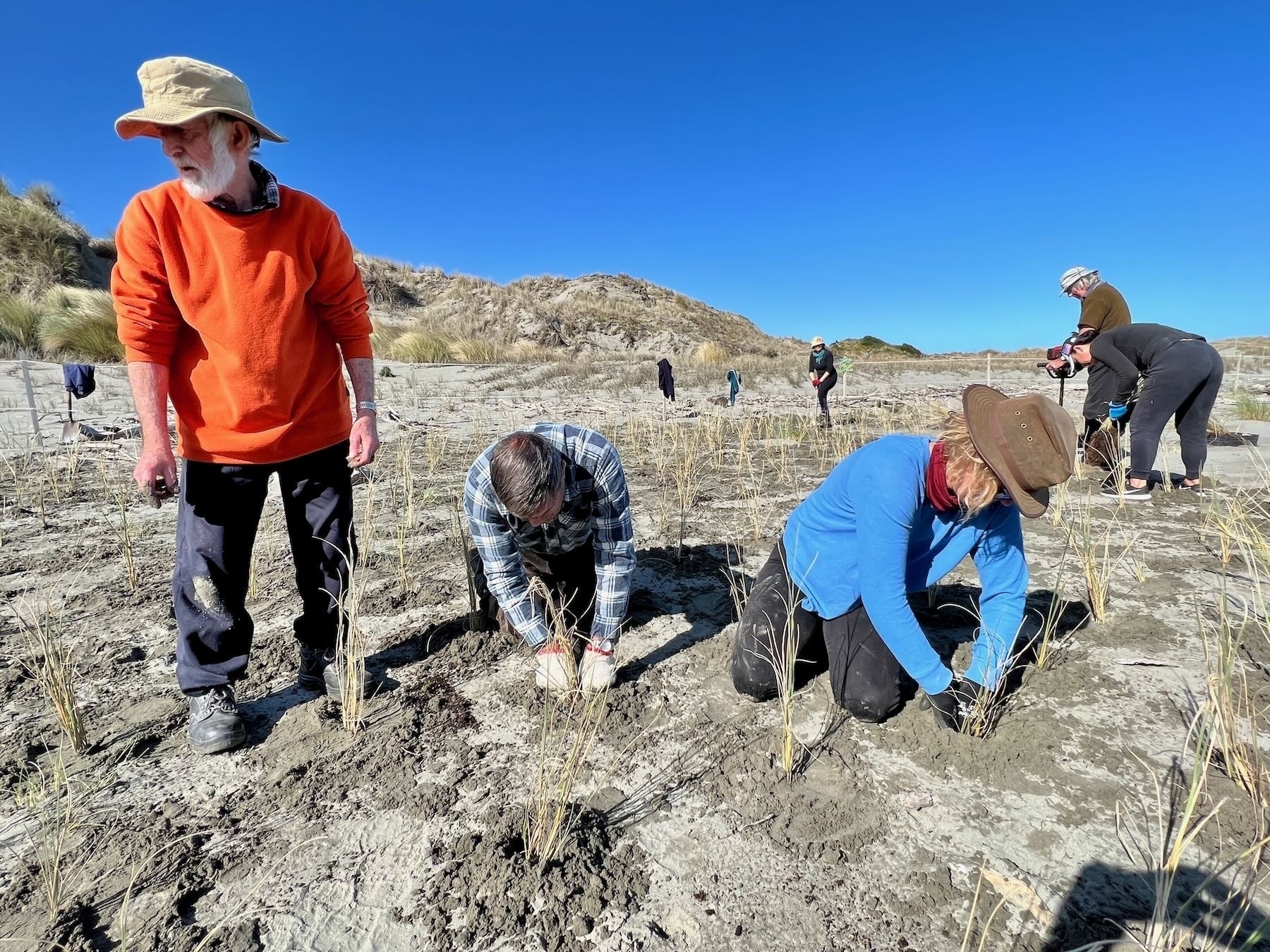
On 08 October 2022 a group of about 35 volunteers planted some 3,500 Spinifex and Pīngao plants along the Waikawa Beach frontage. In about 2.5 hours they covered an area that’s probably about 50 metres by 10 metres.
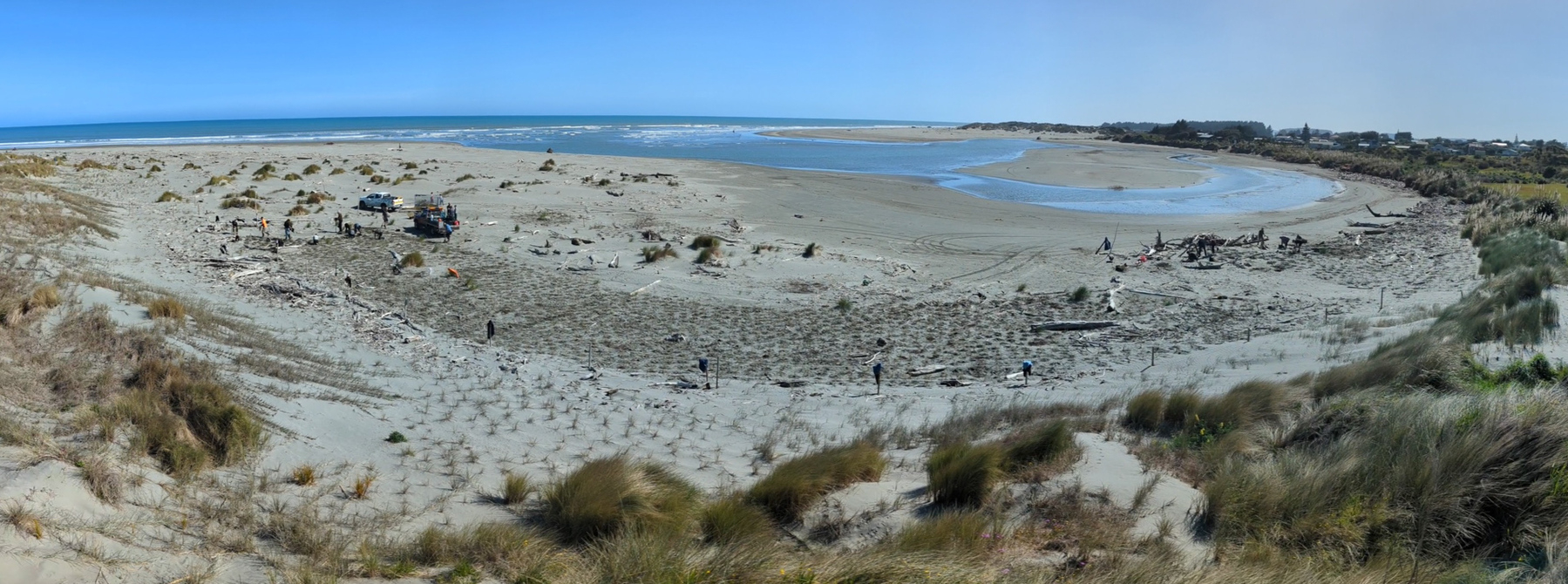
Jeff from the Council drilled holes with an auger, and some people plied spades to dig holes. Others dropped in plants and tucked them in firmly.
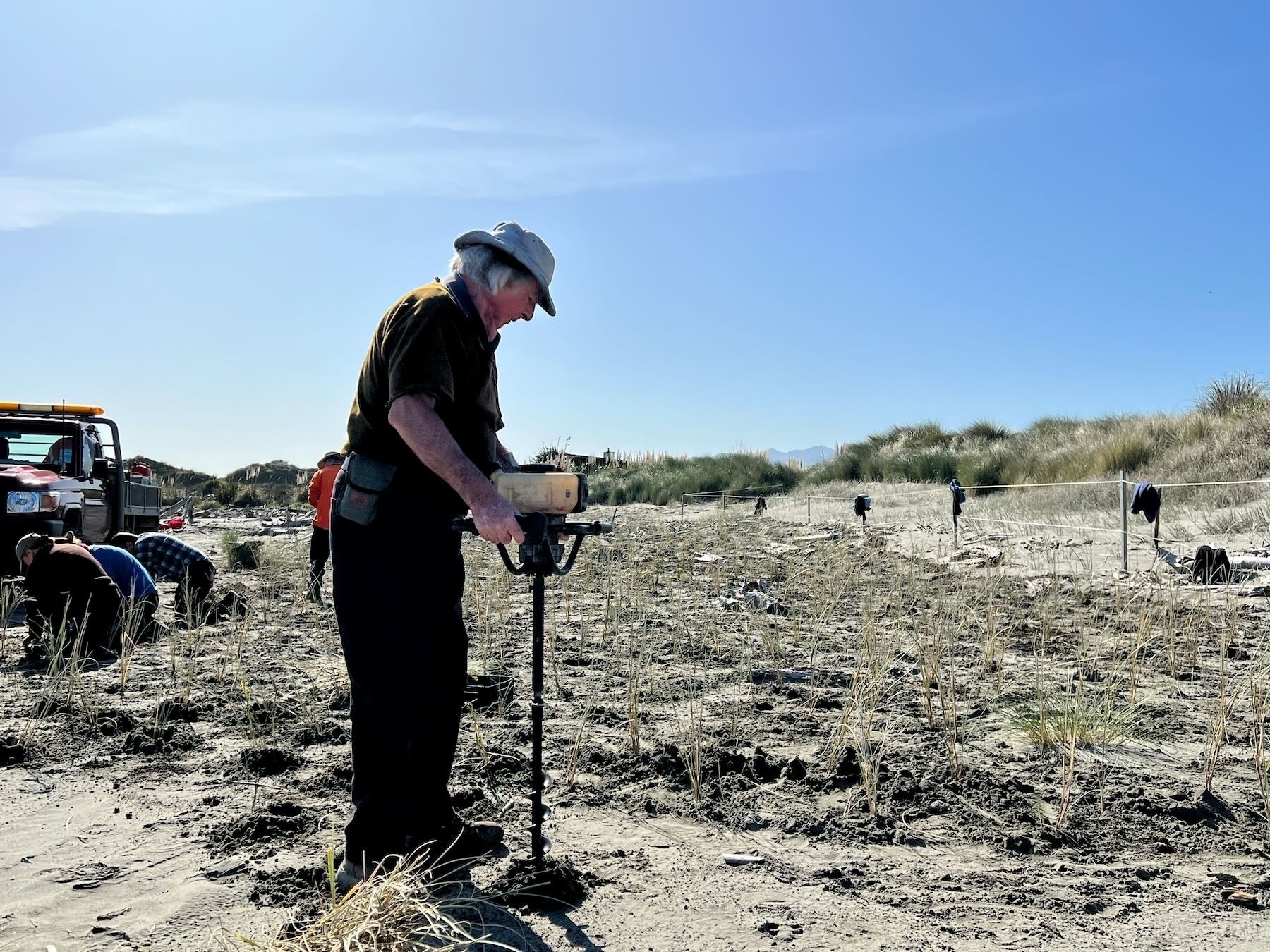
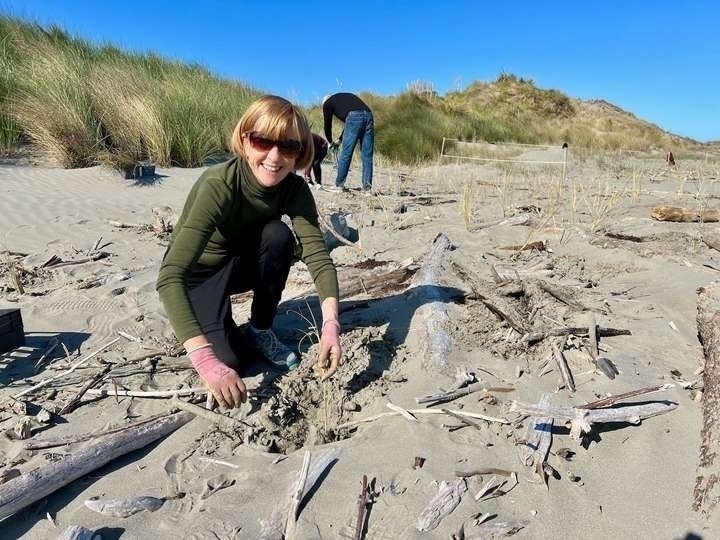
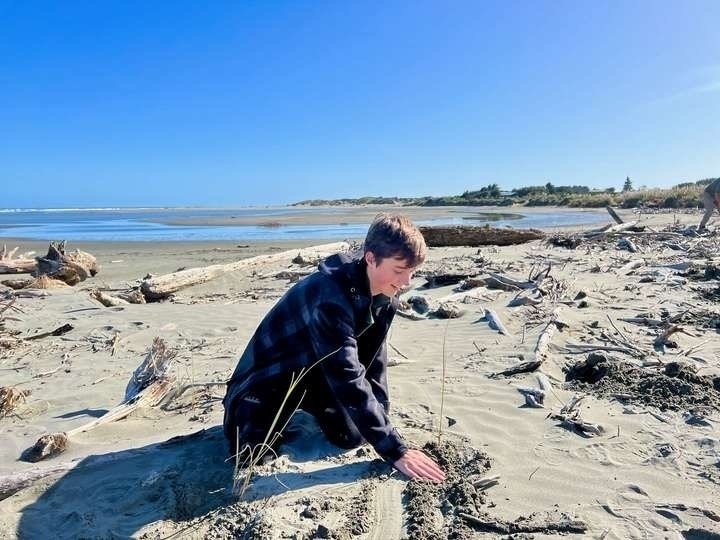
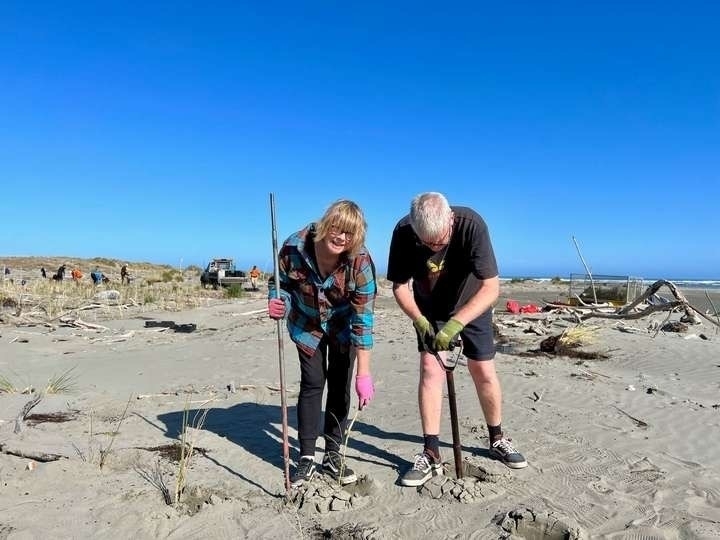
It was pleasing to see a couple of volunteers who live at Manakau giving back to the beach they enjoy. Others came from Strathnaver, with a few from the village, and several Council staff also did their bit.
One teenager had come down from Hokio Beach to pitch in. We happen to know that several of the hardest working volunteers are in their 80s. A few young children, including one who was just passing by, also contributed some planting energy to the event.
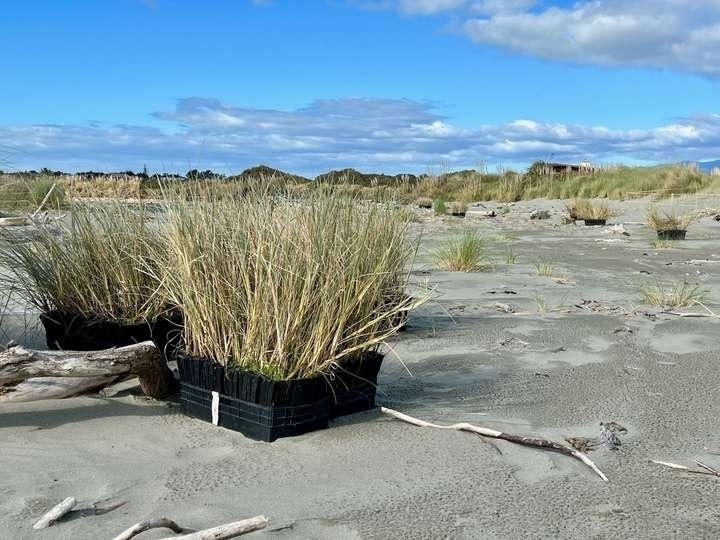
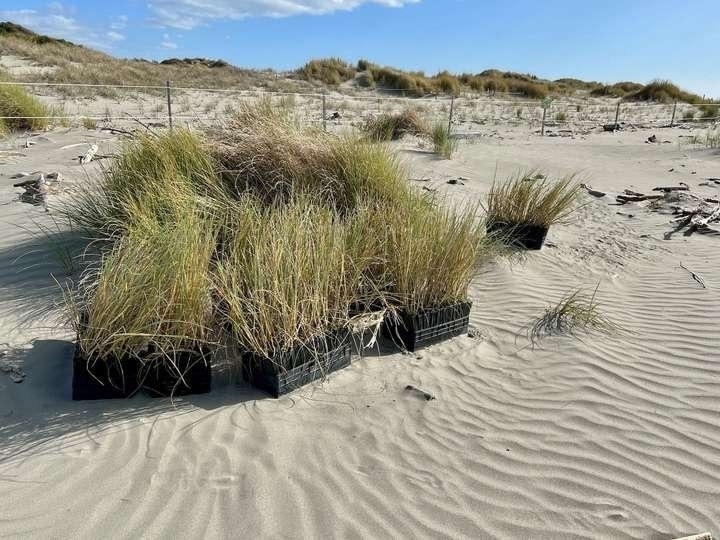
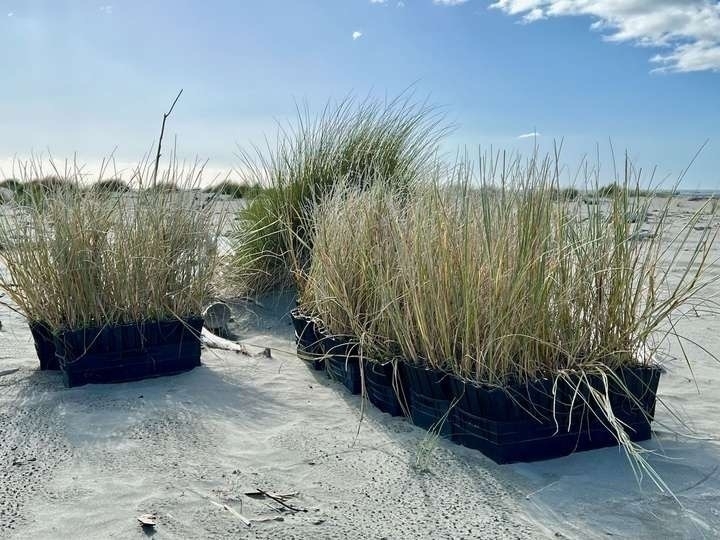
Plants apparently cost $2.80 each. 3,481 plants x $2.80 makes a total investment in plants alone of $9,746.80. Add to that costs for staff time, vehicles and so on, and the value of community labour, and that’s a significant investment in Waikawa Beach. This year’s plants seemed bigger and sturdier than those that went in last year.
The spinifex were put in along the area heading north from the north fork of the North Track to the beach (off 10 Reay Mackay Grove).
Horowhenua District Council intend to also separately fill some areas southwards.
There is also a plan for Council staff to plant spinifex in the heavy erosion zone between the Miratana Track (off Manga Pirau Street) and the groyne. They intend to plant maybe 3 rows to start with in case the erratic tides and river flows wash them away. That should create a starting point for reclaiming that area while reducing costs if the plants don’t survive. If they take hold, then in future Council can increase the plantings in that area.
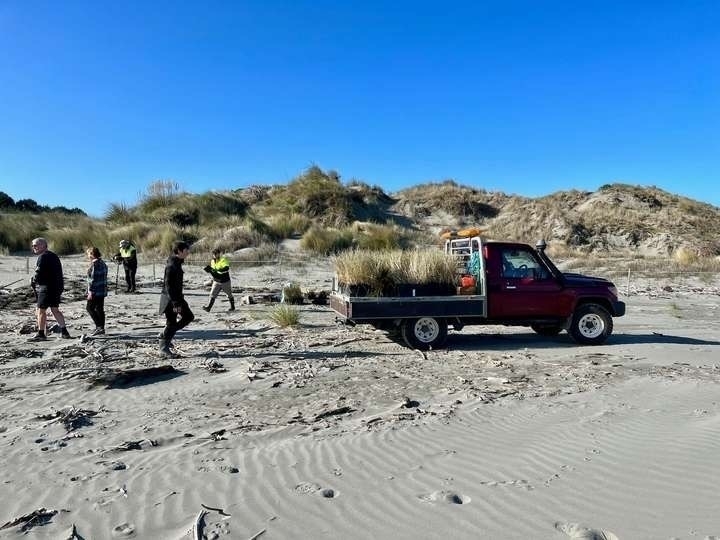
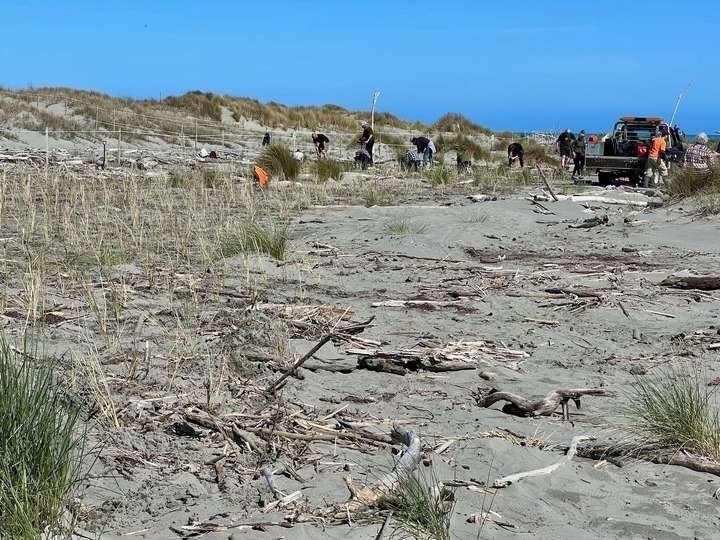
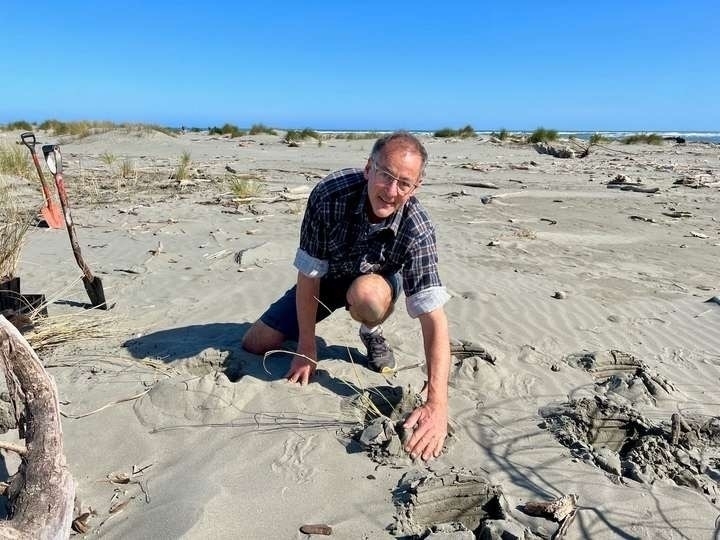
From watching the progress of previous plantings it seems it takes about 2 years before the plants are really established, then they take off. Spinifex hold sand really well and extend outwards, rather than upwards like Marram grass. That helps to create stable dunes in the face of high winds and raging tides.
Areas that just a few years ago were a plain and empty expanse of flat sand are now shapely dunes, creating even more of the beach we all love. What’s not to like?